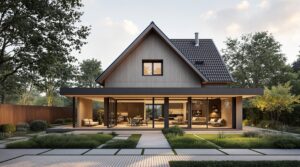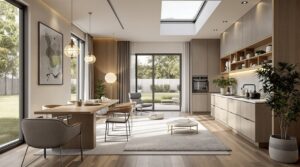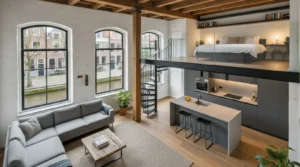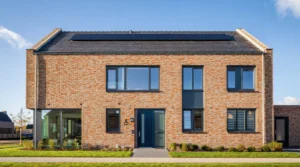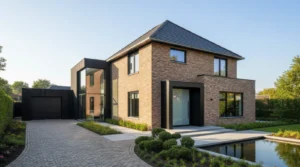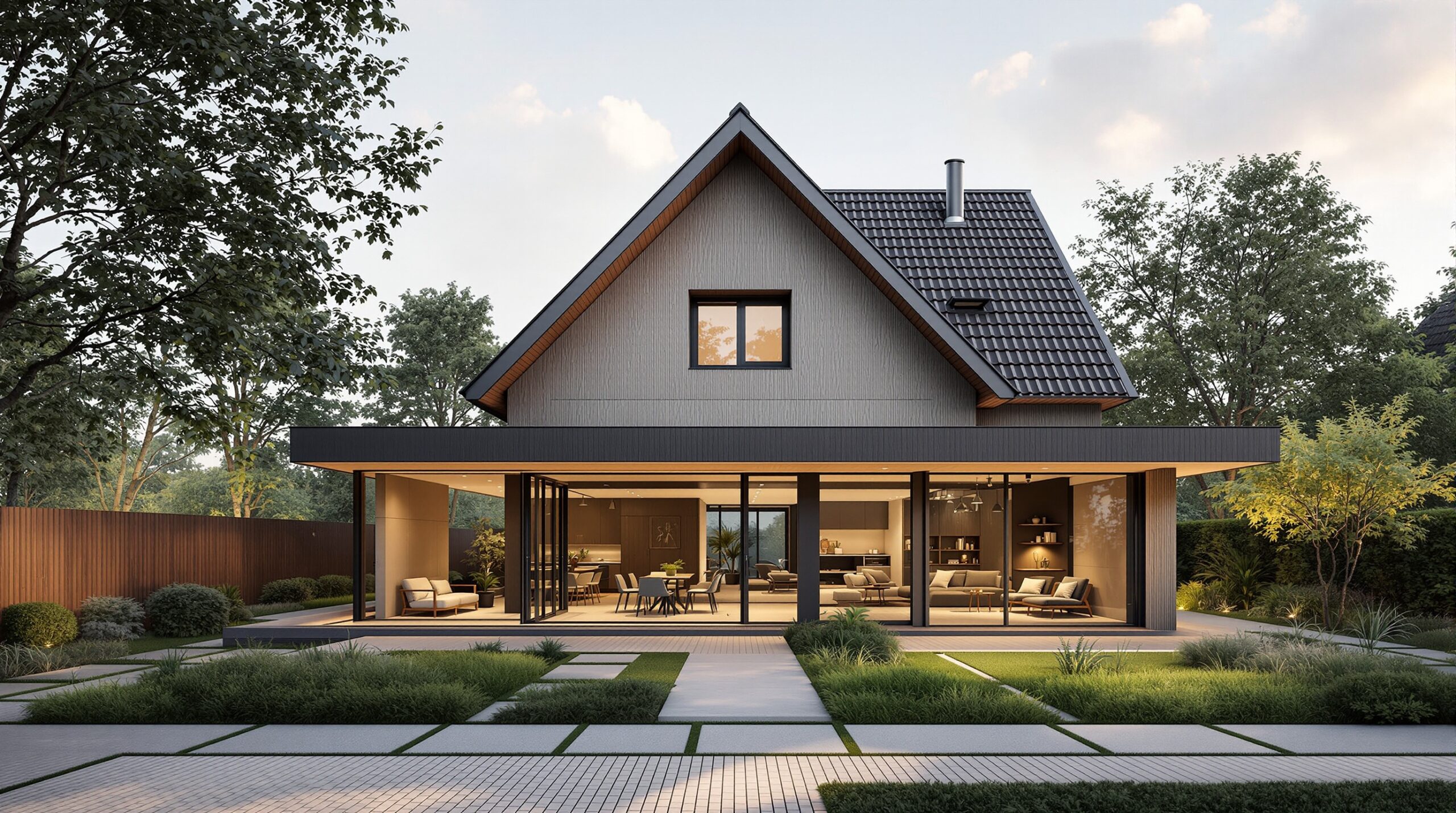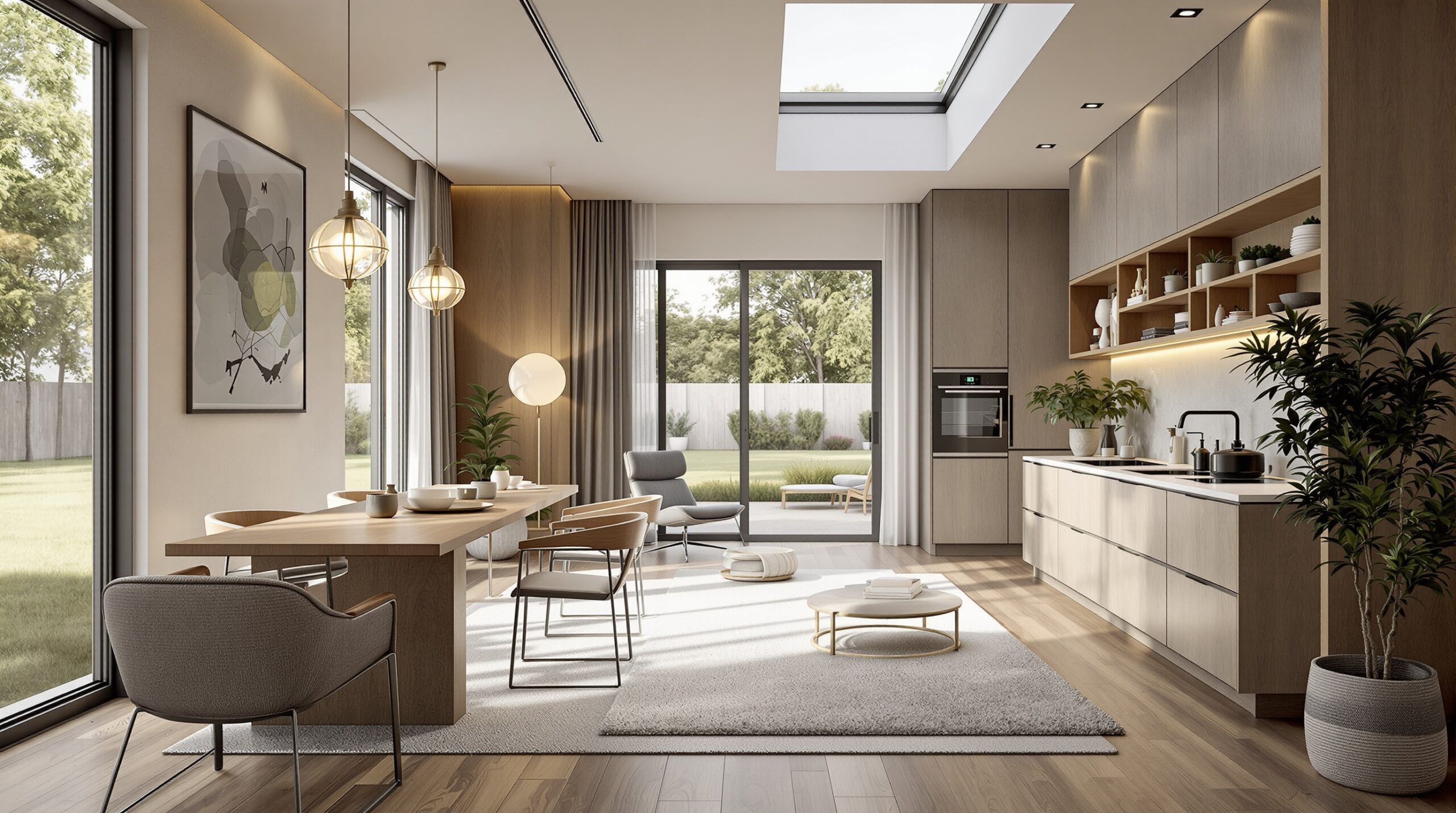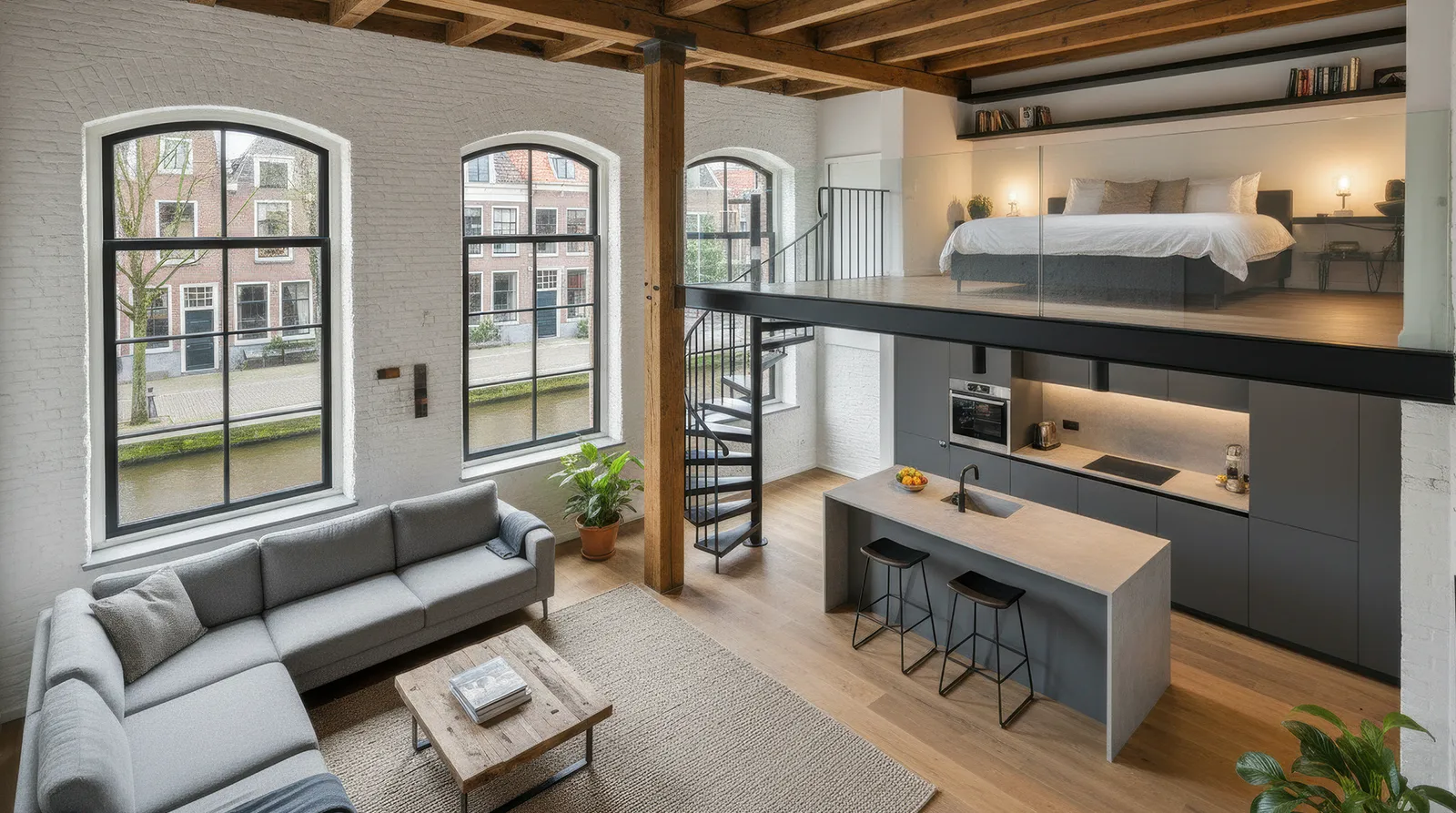The Netherlands’ Home Renovation Revolution: Building Smarter, Living Better
Ever peered through your living room window at a relentless Dutch downpour and wondered if your home, that trusty shelter, is truly ready for what the future holds? Or perhaps you’ve gazed longingly at your garden, imagining a spacious extension, a sun-drenched haven that perfectly suits your growing family. In the Netherlands, home renovation isn’t just about a fresh coat of paint or a new kitchen; it’s a dynamic evolution, a fascinating interplay of innovation, regulation, and a deep-seated commitment to sustainability. As a journalist, I’m constantly struck by how the Dutch approach to building subtly yet profoundly shapes the very fabric of their lives. So, let’s peel back the layers of brick and mortar and explore the exciting world of Dutch home renovation.
Basic Concepts: Your Dutch Renovation Dictionary
Before we dive headfirst into the details of your dream house renovation Netherlands, it’s essential to grasp a few fundamental terms that will undoubtedly come up. Think of these as your essential Dutch building phrasebook.
- Verbouwvergunning (Renovation Permit): This is your golden ticket, the official authorization required for significant changes to your property. While minor cosmetic alterations might not need one, anything that impacts the structure, volume, or appearance of your home – like a new house extension Amsterdam – almost certainly will. Ignoring this can lead to hefty fines and enforcement actions, so it’s a critical first step.
- Bouwbesluit (Building Decree): This comprehensive set of national regulations dictates the technical requirements for all construction and renovation projects in the Netherlands. From fire safety to energy efficiency, structural integrity to accessibility, the Bouwbesluit ensures that every building meets a minimum standard. It’s the rulebook every professional contractor lives by.
- Bestemmingsplan (Zoning Plan): Imagine a spatial blueprint for your local area. The bestemmingsplan outlines what can be built where, and for what purpose. Before you even dream of an extension, it’s vital to check if your plans align with your municipality’s zoning regulations.
- EP-label (Energy Performance Label): This label, ranging from A (highly efficient) to G (least efficient), indicates your home’s energy economy. Renovating often presents an excellent opportunity to improve your EP-label, which not only saves you money but also increases your home’s value and comfort.
The Drive for Change: Why Renovate in the Netherlands?
Why are so many Dutch homeowners embarking on these ambitious building journeys? The reasons are as varied as the architectural styles you see dotting the landscape. Perhaps you’re looking to enhance your home’s energy efficiency, given soaring utility costs and a national push towards sustainability. Maybe your family has grown, and you need more space, turning a cramped house into a comfortable family home. Or is it simply about updating an older property, bringing it into the 21st century with modern aesthetics and smart home technology? Whatever the impetus, a renovation is a significant investment, both financially and emotionally.
House Extensions: Making Space for Life
The pursuit of more living space, especially in urban centres like Amsterdam, is a primary driver for many renovation projects. But how do you expand without moving? The answer often lies in clever extensions.
From Conservatory to Contemporary: The Evolution of the Uitbouw
Imagine the classic Dutch terraced house, often charming but sometimes spatially constrained. The ‘uitbouw’ – a common term for an extension, often at the rear – is a transformative architectural tool. It can extend your living room into the garden, create a larger kitchen-diner, or even add a much-needed home office. But this isn’t just about adding square footage; it’s about reimagining how you interact with your space. The design considerations for a house extension Amsterdam or elsewhere are critical. Will it flow seamlessly from the existing structure, or will it stand as a bold, modern counterpoint? What materials will you choose to ensure not only aesthetic coherence but also thermal performance?
Navigating the Vergunning Labyrinth for Extensions
Before any digger touches the soil, the all-important bouwvergunning enters the picture. For most extensions, particularly those that alter the exterior appearance or increase the volume of your home, a permit is mandatory. This process involves submitting detailed plans to your municipality, demonstrating compliance with the Bouwbesluit and Bestemmingsplan. It’s here that the expertise of an architect or a seasoned contractor becomes invaluable, guiding you through the technical drawings, structural calculations, and legal requirements. Trying to do this alone can feel like deciphering an ancient scroll – best left to the scholars, or in this case, the professionals.
Complete House Renovations: A Fresh Start
Sometimes, a simple extension isn’t enough. When a property no longer meets modern standards, either aesthetically or functionally, a complete house renovation comes into play. This is where the true transformation happens.
The Art of Reinvention: Modernising the Dutch Home
A complete renovation is an opportunity to redefine every aspect of your living environment. This can involve reconfiguring internal layouts, adding or moving bathrooms and kitchens, upgrading all utilities, and significantly improving energy performance. Think about an older 1930s ‘doorzonwoning’ (a type of Dutch semi-detached house with a living room stretching from front to back), often built with distinct, smaller rooms. A complete renovation might open up these spaces, creating an expansive, open-plan living area that better suits contemporary lifestyles. It’s an intricate dance of demolition, construction, and meticulous finishing.
Sustainability at the Core: Beyond Insulation
The Netherlands is fiercely committed to sustainability, and this ethos is central to modern renovation trends. A complete renovation offers the perfect canvas for integrating advanced, sustainable building materials and technologies. This goes far beyond just insulation – though superior insulation, triple glazing, and draught proofing are fundamental. We’re seeing a significant push towards heat pumps replacing traditional gas boilers, solar panels gracing rooftops, and even innovative greywater recycling systems making an appearance. This isn’t just about being “green”; it’s about creating a home that is truly future-proof, reducing your carbon footprint, and significantly lowering your running costs. This focus on resilient home renovation is particularly relevant in a low-lying country, prompting considerations for flood-proof home design Netherlands in some areas.
Construction Trends: Shaping the Future of Dutch Homes
The Dutch construction sector isn’t static; it’s a hotbed of innovation, driven by a blend of technological advancements, environmental imperatives, and evolving homeowner desires. What new ideas are shaping the way we build and renovate?
Modular Marvels: Building with Precision and Speed
One fascinating trend is the rise of modular construction. Imagine entire sections of your extension or even internal rooms being built off-site in a factory, complete with insulation, wiring, and even finishes. These modules are then transported to your home and assembled with remarkable speed and precision. This approach reduces construction time, minimizes disruption, and often leads to higher quality control due to the controlled factory environment. It’s like Lego for grown-ups, but with far more sophisticated engineering.
Smart Homes: The Internet of Things in Your Living Room
The integration of smart home technology is no longer a futuristic fantasy; it’s a tangible reality in many Dutch renovations. From intelligent climate control systems that learn your preferences to automated lighting, security systems, and even appliances controlled by your smartphone, these technologies create a home that is not just comfortable but also intelligent and responsive to your needs. This seamless blend of technology and architecture elevates functionality and convenience, often contributing to energy efficiency by optimising resource use.
Circular Construction: Building for a Better Tomorrow
A cornerstone of Dutch environmental policy, the concept of circular construction is gaining traction. This involves designing buildings with their end-of-life in mind, prioritising materials that can be reused, recycled, or composted. Think of bricks made from recycled demolition waste, insulation crafted from old denim, or timber sourced from sustainably managed forests. It’s a paradigm shift from a linear “take-make-dispose” model to one where resources are kept in use for as long as possible. When you’re selecting materials for your house renovation Netherlands, asking your contractor about the circularity of the chosen products is increasingly pertinent.
Renovation Materials: The Building Blocks of Your Dream Home
The choice of materials is fundamental to any renovation. They dictate not only the aesthetic but also the performance, durability, and sustainability of your project. What should you consider when making these crucial decisions?
Insulation: A Warm and Quieter Home
Insulation is perhaps the unsung hero of energy-efficient homes. Modern renovation projects in the Netherlands often involve upgrading wall, roof, and floor insulation to meet stringent energy standards. Materials like mineral wool, PIR boards, and even natural alternatives like cellulose or sheep’s wool offer exceptional thermal performance, keeping your home warm in winter and cool in summer. Beyond the energy savings, good insulation also provides superior acoustic damping, creating a quieter, more peaceful indoor environment.
Windows and Doors: More Than Just a View
Forget the leaky single pane windows of yesteryear. Today’s windows and doors are sophisticated systems designed for thermal efficiency, security, and aesthetics. Double or, increasingly, triple glazing significantly reduces heat loss and external noise. Frames made from high-quality timber, aluminium, or uPVC (kunststof) offer excellent insulation properties and durability. When planning a house extension Amsterdam, the choice of large glass panels can blur the lines between indoor and outdoor, filling your new space with natural light.
Flooring: The Foundation of Your Interior Design
From the classic warmth of engineered wood to the practicality of polished concrete or resilient vinyl, flooring choices establish the character of your space. Consider materials with good thermal conductivity if you’re installing underfloor heating – a common feature in modern Dutch homes. For bathrooms and kitchens, durable, water-resistant options like ceramic tiles or natural stone are often preferred. The selection process involves balancing aesthetics, durability, comfort, and maintenance.
Sustainable Building Materials: Building with Conscience
As the demand for eco-friendly solutions grows, so does the availability of sustainable building materials. Think about timber with FSC or PEFC certifications, recycled steel, insulation made from agricultural waste, or low-VOC (volatile organic compound) paints that improve indoor air quality. These choices not only reduce your environmental impact but can also contribute to a healthier living environment. Your contractor can guide you through the options, explaining the benefits and costs associated with these innovative products.
Practical Tips for Your Dutch Renovation Journey
Now that we’ve explored the landscape of home renovation in the Netherlands, here are some actionable recommendations to help you embark on your project with confidence and clarity.
- Engage Professionals Early: Do not attempt significant structural or technical work yourself. Hire a qualified architect to design your plans and a reputable, experienced contractor to execute the work. Their expertise is invaluable for navigating regulations and ensuring a high-quality outcome.
- Understand the Permit Process: Familiarise yourself with the bouwvergunning requirements for your specific project. Your architect or contractor will manage this, but it’s crucial to understand the timeline and what’s involved.
- Get Multiple Quotes: Obtain detailed quotes from at least three different contractors. Compare not just the price, but also the scope of work, timeline, and their references.
- Prioritise Energy Efficiency: Always consider opportunities to improve your home’s energy performance. Invest in good insulation, high-performance windows, and energy-efficient heating systems. It pays off in the long run.
- Plan for Contingencies: Renovations can uncover unforeseen issues. Allocate a contingency budget, typically 10-15% of the total project cost, for unexpected expenses.
- Communicate Clearly: Maintain open and frequent communication with your architect and contractor. Discuss your expectations, timelines, and any concerns promptly.
- Research Subsidies: Investigate potential government subsidies or loans for energy-saving measures. The Dutch government often offers incentives for homeowners making sustainable improvements.
- Think Long-Term: Design your renovation not just for today, but for your future needs and potential resale value. Durable, timeless choices often prove to be the wisest.
Conclusion: Building a Better Future, Brick by Brick
Renovating a home in the Netherlands is undeniably a complex undertaking, a journey through regulations, design choices, and material selections. Yet, it’s also an incredibly rewarding one. From the intricacies of securing a bouwvergunning for a house extension Amsterdam to the thoughtful selection of sustainable building materials, every decision contributes to creating a living space that is not only beautiful and functional but also energy-efficient, robust, and uniquely yours. By embracing the expertise of professionals, understanding the local context, and focusing on quality and sustainability, you can transform your home into a truly future-proof haven, ready to stand the test of time and weather any storm, both literally and figuratively.


